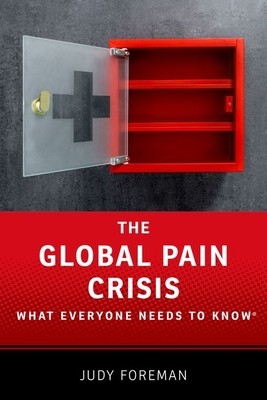
- We will send in 10–14 business days.
- Author: Judy Foreman
- Publisher: Oxford University Press, USA
- ISBN-10: 019025923X
- ISBN-13: 9780190259235
- Format: 13.7 x 20.8 x 3.1 cm, softcover
- Language: English
- SAVE -10% with code: EXTRA
Reviews
Description
Tens of millions of people around the world live with chronic pain - many in such severe pain they are disabled by it. The Institute of Medicine estimates that chronic pain costs the U.S. alone $560 to $635 billion a year in direct medical costs and lost productivity. Morphine, an effective painkiller, costs only three cents a dose, yet because of excessive regulation in many countries, it is unavailable to millions of people who need it, even at the end of life. The World Health Organization notes that in addition to the one million end-stage AIDS/HIV patients who can't get morphine and other controlled medications, 5.5 million terminal cancer patients, nearly a million people suffering from accidents or violence, and an incalculable number of people living with chronic illnesses or recovering from surgery don't have access to it, either. Furthermore, women, children, older people, and the poor are disproportionally affected by inadequate pain relief. Physicians know almost
nothing about chronic pain, much less how to treat it, for two reasons: medical schools barely teach it and government institutions allot almost nothing to the pain research budget.
- Author: Judy Foreman
- Publisher: Oxford University Press, USA
- ISBN-10: 019025923X
- ISBN-13: 9780190259235
- Format: 13.7 x 20.8 x 3.1 cm, softcover
- Language: English English
Tens of millions of people around the world live with chronic pain - many in such severe pain they are disabled by it. The Institute of Medicine estimates that chronic pain costs the U.S. alone $560 to $635 billion a year in direct medical costs and lost productivity. Morphine, an effective painkiller, costs only three cents a dose, yet because of excessive regulation in many countries, it is unavailable to millions of people who need it, even at the end of life. The World Health Organization notes that in addition to the one million end-stage AIDS/HIV patients who can't get morphine and other controlled medications, 5.5 million terminal cancer patients, nearly a million people suffering from accidents or violence, and an incalculable number of people living with chronic illnesses or recovering from surgery don't have access to it, either. Furthermore, women, children, older people, and the poor are disproportionally affected by inadequate pain relief. Physicians know almost
nothing about chronic pain, much less how to treat it, for two reasons: medical schools barely teach it and government institutions allot almost nothing to the pain research budget.


Reviews